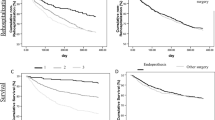Abstract
Background and aims: Hip fracture in older persons is a frequent reason for hospital admission and a substantial workload in orthopedic wards for geriatric liaison teams. However, robust patients who do not present in-hospital complications may not need geriatric liaison. For the sake of triage, we studied the ability of usual admission scores to identify patients who will not develop in-hospital complications, and who may therefore not be included in the overworked geriatric liaison teams. Methods: A retrospective cohort of consecutive community-living elderly patients (age≥75 yrs), admitted for traumatic hip fracture in the orthopedic divisions of a teaching hospital over 18 months was examined. The predictive value of commonly used frailty scores (ISAR, VIP, KATZ) to rule out the incidence of three frequent and preventable in-hospital acute geriatric events (major behavioral problems, pressure sores, falls) was assessed by ROC curves and negative likelihood ratio (-LR). Results: Of 145 older persons with hip fracture (median age 84 years; 76% women; 57% living alone, 44% with pre-existing geriatric syndromes), 81 (56%) presented some acute geriatric events (AGE), i.e. major behavioral problems (46%), pressure sores (19%) and/or falls (5%). The three frailty admission scores showed low power for AGE prediction (area under the ROC curve: 53–58%) and identification of patients who will not present in-hospital AGE (-LR>0.5 at the most sensitive cut-off). Conclusions: None of the three scores helped in the triage of patients according to their risk of future in-hospital AGE. All older patients with hip fracture, irrespective of their admission frailty-robustness profile, should receive geriatric evaluation and intervention.
Similar content being viewed by others
References
Thomas EJ, Brennan TA. Incidence and types of preventable adverse events in elderly patients: population based review of medical records. BMJ 2000; 320: 741–4.
Vidán M, Serra JA, Moreno C, Riquelme G, Ortiz J. Efficacy of a comprehensive geriatric intervention in older patients for hip fracture: a randomized, controlled trial. J Am Geriatr Soc 2005; 53: 1476–82.
Siddiqi N, House AO, Holmes JD. Occurrence and outcome of delirium in medical in-patients: a systematic literature review. Age Ageing 2006; 35: 350–64.
Givens JL, Sanft TB, Marcantonio ER. Functional recovery after hip fracture: the combined effects of depressive symptoms, cognitive impairment, and delirium. J Am Geriatr Soc 2008; 56: 1075–9.
Inouye SK, Studenski S, Tinetti ME, Kuchel GA. Geriatrics syndromes: clinical, research, and policy implications of a core geriatric concept. J Am Geriatr Soc 2007; 55: 780–91.
Schoevaerdts D, Cornette P, de Saint Hubert M, Boland B, Swine C. Le délirium: un syndrome gériatrique fréquent. La Revue de Gériatrie, 2010; 35: 111–20
Hitcho EB, Krauss MJ, Birge S et al. Characteristics and circumstances of falls in a hospital setting. A prospective analysis. Appl Nurs Res 1995; 8: 129–39.
Oliver D, Daly F, Martin FC, McMurdo MET. Risk factors and risk assessment tools for falls in hospital in-patients: a systematic review. Age Ageing 2005; 33: 122–30.
Haleem S, Heinert G, Parker MJ. Pressure sores and hip fractures. Injury 2008; 39: 219–23
Baumgarten M, Margolis D, Berlin JA et al. Risk factors for pressure ulcers among elderly hip fracture patients. Wound Repair Regen 2003; 11: 96–103.
Ellis G, Langhorne P. Comprehensive geriatric assessment for older hospital patients. Br Med Bull 2005; 71: 45–59.
Bachmann S, Finger C, Huss A, Egger M, Stuck AE, Clough-Gorr KM. In patient rehabilitation specifically designed for geriatric patients: systematic review and meta-analysis of randomised controlled trials. BMJ 2010; 340:c1718 doi:10.1136/bmj.c1718: 11pp.
British Orthopedic Association. The Care of Patients with Fragility Fracture (“Blue Book”). Available at: http://www.bgs.org.uk/index.php?option=com_content&view =article&id=338:bluebookfragilityfracture&catid=47:fallsandbo nes&Itemid=307 Accessed May 31st 2010.
Cameron I, Crotty M, Currie C et al. Geriatric rehabilitation following fractures in older people: a systematic review. Health Technol Assess 2000; 4: i–iv, 1–111.
Cameron ID, Handoll HHG, Finnegan TP, Madhok R, Langhorne P. Co-ordinated multidisciplinary approaches for inpatient rehabilitation of older patients with proximal femoral fractures. Cochrane Database Syst Rev 2001; Issue 3. Art. No.: CD000106. DOI: 10.1002/14651858.CD000106.
American Geriatrics Society Core Writing Group of the Task Force on Future of Geriatric Medicine. Caring for Older Americans: the Future of Geriatric Medicine. J Am Geriatr Soc 2005; 53: S245–56.
Mc Cusker J, Bellavance F, Cardin S, Trépanier S, Verdon J, Ardman O. Detection of older people at increased risk of adverse health outcomes after an emergency visit: the ISAR screening tool. J Am Geriatr Soc 1999; 47: 1118–24.
Vandewoude M, Geerts CAM, Paridaens KMJ, D’Hooghe AHM. A screening tool for activating liaison geriatrics in general hospitals: the Variable Indicative of Placement Risk (VIP). Eur J Geriatr 2008; 10: 120–6.
Covinsky KE, Palmer RM, Counsell SR, Pine ZM, Walter LC, Chren MM. Functional status before hospitalization in acutely ill older adults: validity and clinical importance of retrospective reports. J Am Geriatr Soc 2000; 48: 164–9.
Folstein MF, Folstein SE, McHugh PR. “Mini-mental state”. A practical method for grading the cognitive state of patients for the clinician. J Psychiatr Res 1975; 12: 189–98.
Juby A, Tench S, Baker V. The value of clock drawing in identifying executive cognitive dysfunction in people with a normal Mini-Mental State Examination score. Can Med Assoc J 2002; 167: 859–64.
Yesavage JÁ, Brink TL, Rose TL et al. Development and validation of a geriatric depression screening scale: a preliminary report. J Psychiatr Res 1983; 17: 37–49.
Inouye SK, van Dyck CH, Alessi CA, Balkin S, Siegal AP, Horwitz RI. Clarifying confusion: the confusion assessment method: A new method for detection of delirium. Ann Intern Med 1990; 113: 941–8.
Author information
Authors and Affiliations
Corresponding author
Rights and permissions
About this article
Cite this article
De Brauwer, I., Lepage, S., Yombi, JC. et al. Prediction of risk of in-hospital geriatric complications in older patients with hip fracture. Aging Clin Exp Res 24, 62–67 (2012). https://doi.org/10.1007/BF03325355
Received:
Accepted:
Published:
Issue Date:
DOI: https://doi.org/10.1007/BF03325355




